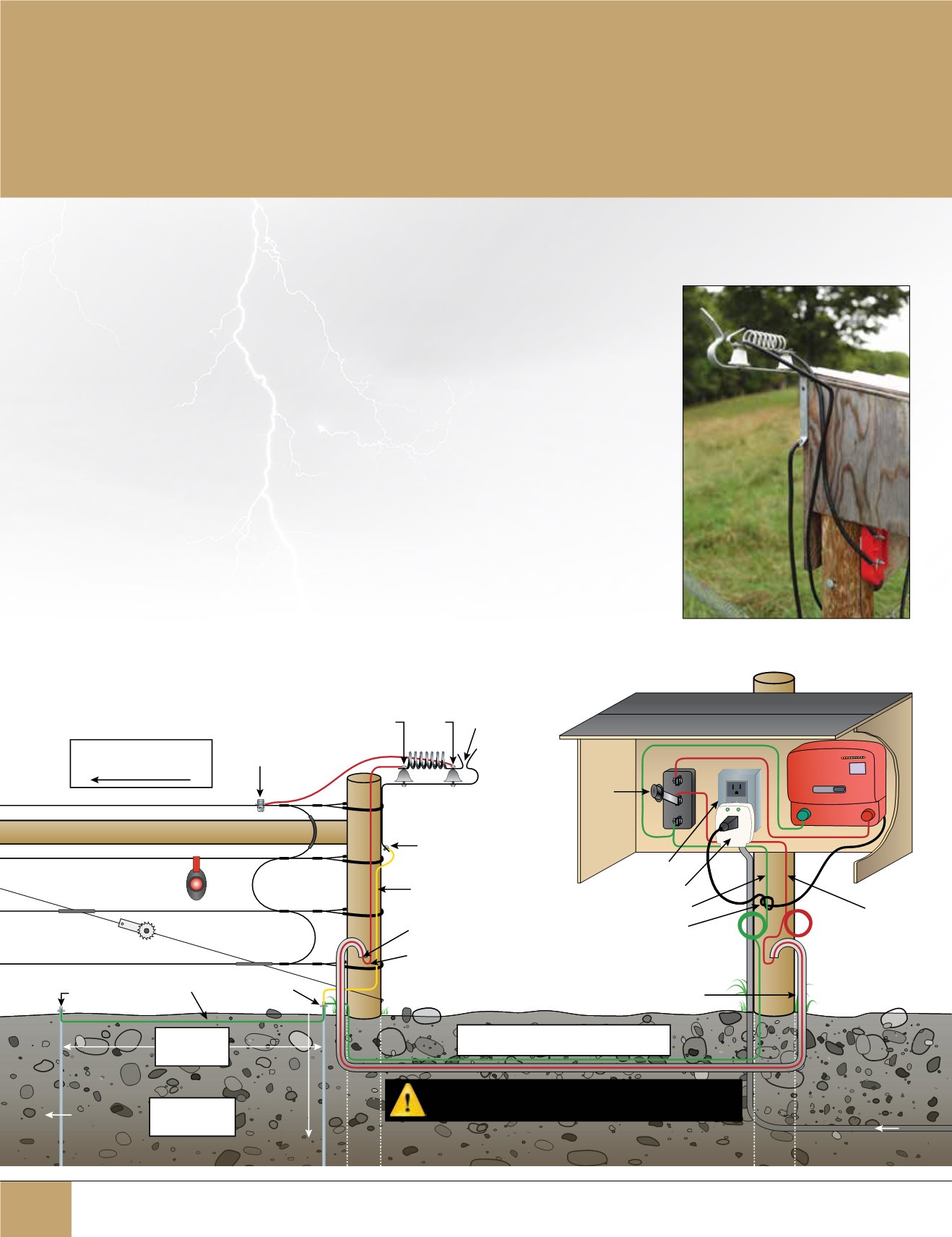
26
New Engl and ’s Agr i cul tura l Fence Exper t s
Earth
Always locate energizer ground eld
at least 40' away from utility grounds.
Wellscroft recommends locating energizers outside of buildings in
case of a lightning strike. Always use double insulated leadout wire
for fence and ground connections. See page 25 for insulated wire.
-
-
+
+
10' Minimum
before next
ground rod if
needed
A/C Power
from Utility
Ground Rod
Clamp
Use insulated wire between
ground rod clamps
Ground Rods
spaced 10' apart
at minimum
Hot-Dip Galvanized
Ground Rods
Approximately
3' - 6' of ground rod
for every joule.
3½' - 7½'
Deep
PVC pipe with insulated positive wire inside
Insulate
Brace Wire
Strainer
Brace
Rail
End
Post
Fence
Alert
To Fence
To Energizer
Split Bolt
Connection
Optional
Fence
Induction
Loop
Optional
Ground
Induction
Loop
Knot in energizer
cord around ground
leadout wire
To Negative
To Knife Switch
To ground eld located under the
fence or to a separate ground eld
40' away from energizer ground
eld. For small energizers, use the
energizer’s ground eld.
Adjust spark gap for
the size of energizer.
Install additional lightning
diverters throughout the
perimeter of the fence as needed.
1,000 Joule
Surge Protector
To Ground
Lightning Diverter/Choke
Bend into a water
diversion loop
Cover end of PVC pipe
GFI Socket
Energizer
Double
Pole
Switch
To Fence
Three sided cover for
energizer, plug and switch.
Lightning Protection
Wellscroft highly recommends the use of lightning protection products when
installing a perimeter electric fence or offset wire.
Lightning can affect the energizer in two main ways. The most common is in the form of a
voltage surge when the utility wire is hit and the energizer is a plug-in. If present, unplug the
unit, and for the times when that is not possible, install at least a 1,000 joule surge protector
which should reduce the impact of the surge.
Lightning can also damage the energizer if the fence or an object near the fence is struck and
inductively the high voltage is carried along the fence wire and through the energizer on its way
to the ground. Putting separate lightning diverters on the fence at different prominent locations
and attaching them to separate ground rods can greatly reduce the damage. Also, putting a
lightning choke and diverter at the beginning of the fence and attaching it to the energizer
ground or a separate ground field at least 40' away will help.
Wellscroft does not recommend detaching the lead out wires from the energizer if a storm
is near, but a double pole cut-out switch may be installed and the fence thrown to ground in
advance of a storm. Wellscroft also recommends the installation of a fence alert to remember to
turn the fence back on after a storm.
For additional protection, an extra induction loop can be made by making seven 8" loops in the
lead out wire between the fence and switch, and optionally the same in the ground lead out.
Typical 110 Volt Energizer Installation
with Lightning Diverter


